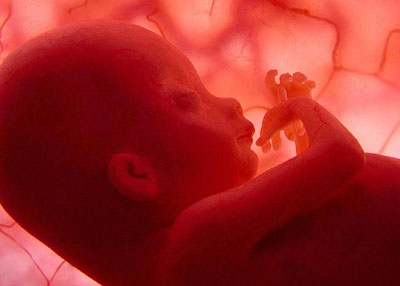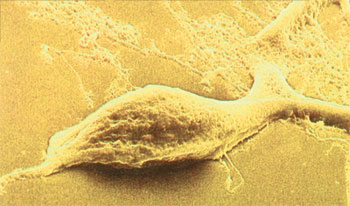 |
It was possible to fully understand the blood and the various factors in it only in the last century. Yet blood has been flowing through our veins and fulfilling its functions ever since human beings were first created. No doubt this is the superior creation of God, Who reveals His greatness and infinite power in all things. |
In the first blood transfusion ever performed, the patient was given animal blood. The patient soon died, but nobody could understand why.
When the blood of different animals proved useless, the idea was born of transfusion from human being to human being. Experiments were performed with individuals thought to possess plenty of blood and who were selected at random. Most of these experiments also ended in failure, however. The first physicians engaged in blood transfusions were unable to fully analyze and understand this important fluid, because of two of its properties. One was the way that blood swiftly clots outside the body, and the other was the likelihood of the person to whom they gave the transfusion dying.79 There had to be some different factor in blood that the physicians were unable to unravel. This factor was not discovered until the appearance of the science of biochemistry.
Not until the early 20th century did scientists discover that blood does not consist of a simple red fluid. Various factors may make one person's blood different to another's. Therefore, in order for blood transfusions to be given, these factors must be compatible in both parties. What we refer to as blood type is the determination of these special factors. There are more than 300 of these factors that determine blood type, each one of which distinguishes you from most other people.
The properties that determine blood type are concealed in the red blood cells. Among the 200 different molecules in the red blood cell membrane, those of perhaps the most interest are the molecules that give the blood its type—A, B or 0. Red blood cells carry either type A or type B molecules, or very occasionally, both together (AB), or none (0).
Red blood cells with type A molecules also contain antibodies against type B molecules. Therefore, when anyone with type A blood is given type B blood, the immune system goes into action within a few seconds and tries to destroy this foreign substance. The consequences are exceedingly severe. Blood cells burst, blood coagulates. The liver and kidneys become unable to function properly. Unless intervention takes place immediately, the result is generally death.
Type 0 people, who have neither molecule in their blood, have developed antibodies against both these molecules. They can receive blood only from people lacking the two molecules—in other words, from people with type 0 blood like themselves. People with both molecules, with type AB blood, on the other hand, have not developed antibodies against either molecules. They can receive blood from either type A or type B individuals.
Another molecule on the red blood cell of just as much importance as these others is the Rhesus (or Rh) factor. If this is in the red blood cells, then the blood type will be Rh-positive (Rh+); otherwise, it will be Rh-negative (Rh-). The major significance of the Rh factor manifests itself in blood incompatibilities during pregnancy. A Rhesus negative pregnant woman will produce antibodies to the Rhesus positive fetal blood. These antibodies do no harm to the first baby. However, any second baby with the Rhesus factor is subjected to attack by these antibodies, now ready and waiting in the mother's bloodstream. The antibodies target the baby and destroy its fresh erythrocytes. Anemia and heart diseases manifest themselves. The baby may well be stillborn, and even if it is born alive, toxic bilirubin will have formed in its body as a result of the breaking down of its red blood cells. This substance generally damages the brain and gives rise to mental impairments, or even death.80
It became possible to understand the nature of blood only in the last century. Yet blood has been flowing in the veins of every human being who has ever lived, discharging its duties and carrying various materials, factors and molecules. That human beings cannot even fully comprehend this miracle should increase their submission to and adoration of God.
God is the Almighty, superior to all things, Who has the power to perform all that He desires. He is the Shaper, the Giver of Form (Al-Musawwir). He is the Safeguarder (Al-Muhaymin), the Protector. And God is the Supremely Great (Al-Mutakabbir), He Who reveals His might in all places and events. We must appreciate Him properly, and see and understand the names of our Lord in the things He has created, and must turn to Him. Those who turn to Him will reap the benefit in this world and in the Hereafter. In one verse God reveals:
He is God—there is no god but Him. He is the King, the Most Pure, the Perfect Peace, the Trustworthy, the Safeguarder, the Almighty, the Compeller, the Supremely Great. Glory be to God above all they associate with Him. (Surat al-Hashr: 23)
 |
A nerve cell in the body acts with amazing intelligence. However, to call a nerve cell intelligent doesn't imply that it possesses the intelligence. The reason of the amazing consciousness in body cells is the inspiration they take from God. |
As the systems in the human body go about their work, they also assume responsibility for the coordination, order and organization of these tasks. That is why we describe structures in the body as intelligent and why we seek to account for the source of that intelligence. No doubt, the term intelligent cell or intelligent organ is a metaphor, because cells or tissues with no brain or nervous system cannot have their own consciousness. Yet an astonishing consciousness does emerge in everything they do. This represents an insoluble dilemma for Darwinists and all materialists, who maintain that consciousness is born from the cells in the brain and the chemical reactions among those cells. In short, according to the materialist claims, consciousness consists of the brain.
Though materialists attempt to reduce consciousness to the brain, scientific observations show that even living things with no brains possess consciousness. The intelligent cells examined throughout the course of this book are just one example. In recent years, observations of bacteria and other single-celled organisms have shown that these microscopic entities literally evaluate their surroundings in an exceedingly intelligent manner and make appropriate decisions. The molecular biologist Michael Denton writes:
The amoeba, although the size of a small speck of dust, exhibits behavioral strategies which seem objectively indistinguishable from those of animals far higher up the scale. If an amoeba were the size of a cat, we would probably impute to it the same level of intelligence as we do to a mammal. Just how do such minute organisms integrate all the information necessary to make such apparently calculated intelligent decisions? … the way it [the amoeba] integrates all the information necessary to pursue its prey, its decision to change direction, its persistence in the pursuit when its prey escapes, the sudden breakout of the smaller amoeba from its imprisonment in the interior of its captor at the moment when the wall of protoplasm was at its thinnest—all this remains to be fully explained in molecular terms.81
The final sentence of the above account is particularly notable. Amoebas' behavior cannot be explained at the molecular level, in terms of chemical reactions and physical effects. These living things decide and act as conscious entities, even though they possess neither brain nor nervous system. They are merely cells consisting of protein, fat and water.
There are other examples revealing the intelligent behavior of bacteria.
According to a report in the July, 1999, edition of the French scientific journal Science et Vie ["Science and Life"], bacteria communicate with one another and make decisions based on those communications.
Science et Vie emphasizes that this communication takes place by means of a very complex system. On their surfaces, bacteria have mechanisms that emit and receive electrical signals. In this way, they send one another signals, and transmit information about the features of their environment and the food situation therein. On the basis of that information, they then decide whether to multiply and when to stop doing so.
 |
In short, tiny living things too small to be seen with the naked eye, collect information about their surroundings, transmit this information to one other, and later still—as a group—determine a particular course of action.
All these examples show the presence of a consciousness that can never be reduced to matter. From human beings, regarded as the most complex living things, to single-celled creatures, regarded as the simplest, there is an astonishing consciousness that reaches far beyond mere matter.
So what is its source?
The Qur'an provides important information on this subject. For example, its verses referring to honeybees reveal that the conscious behavior exhibited by these creatures is inspired in them by God:
Your Lord revealed to the bees: "Build dwellings in the mountains and the trees, and also in the structures which men erect. Then eat from every kind of fruit and travel the paths of your Lord, which have been made easy for you to follow." From inside them comes a drink of varying colors, containing healing for humanity. There is certainly a sign in that for people who reflect. (Surat an-Nahl: 68-69)
Another verse reports that all living things are under the dominion of God. As revealed in the Qur'an, "There is no creature He does not hold by the forelock" (Surah Hud: 56).
This secret revealed in the Qur'an is the source of the mysterious consciousness in living things. Contrary to what evolutionists imagine, consciousness is not a property of matter. No matter what you do to the atoms comprising matter, you can never cause them to have consciousness. Consciousness must arise from another consciousness; and the consciousness in living things stems from the inspiration of God.
The intelligence that appears in the cells in the human body or of any organism is a manifestation of God's absolute dominion over living things. God reveals Himself by means of the entities He creates, and human beings can witness and appreciate His infinite power and might by considering these works. In listing the examples of consciousness in this book, therefore, this important fact needs to be borne constantly in mind.